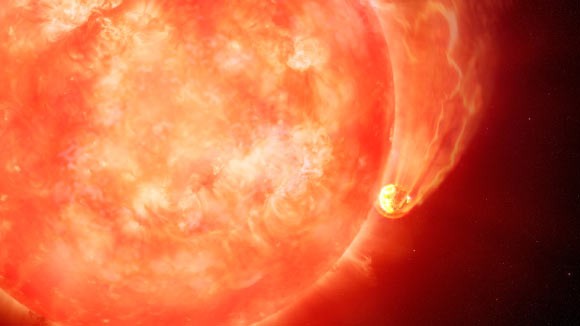As stars like our Sun reach the end of their lives, they embark on a transformative journey that significantly impacts the planets orbiting them. New research, leveraging data from NASA’s Transiting Exoplanet Survey Satellite (TESS), provides compelling evidence that these aging stars actively destroy planets residing close to them, a phenomenon previously theorized but now directly observed.
The Evolution of Stars and Their Planets
Stars spend the majority of their existence in a stable phase known as the “main sequence,” fusing hydrogen into helium in their cores. However, once a star exhausts its hydrogen fuel, it begins to evolve. For stars similar in mass to our Sun, this transition involves expanding into a red giant, a phase characterized by significant size increase and surface cooling. This expansion poses a serious threat to planets in close orbits, as they may be engulfed by the growing stellar envelope.
A Search for Disappearing Planets
Astronomers Edward Bryant and Vincent Van Eylen focused on 456,941 stars that have recently entered the post-main sequence phase. They employed a computer algorithm to analyze these stars for subtle dips in brightness, which indicate a planet passing in front of the star – a technique known as the transit method. The researchers specifically targeted giant planets with short orbital periods, planets that complete an orbit in 12 days or less.
Their analysis revealed the existence of 130 planets and planet candidates orbiting these stars, including 33 previously unknown. Importantly, they discovered that these close-in giant planets were much less common around stars that had significantly expanded and cooled into red giants, suggesting that many had already been destroyed.
The Devastating Power of Tidal Interactions
The destruction of these planets is likely due to a “gravitational tug-of-war” known as tidal interaction. As a star evolves and expands, the gravitational pull exerted by a close-in planet becomes stronger. Similar to how the Moon influences Earth’s tides, the planet’s gravity pulls on the star, while the star simultaneously pulls on the planet. This mutual tugging slows the planet’s orbit and causes it to spiral inwards towards the star. Eventually, the planet either disintegrates or falls directly into the star.
“This is strong evidence that as stars evolve off their main sequence they can quickly cause planets to spiral into them and be destroyed,” said Dr. Bryant, an astronomer at University College London and the University of Warwick. The researchers were surprised by the efficiency with which these stars appear to be consuming their close-in planets.
Implications for Our Own Solar System
The findings have broader implications for our own solar system. In approximately five billion years, our Sun will also evolve into a red giant. This research suggests that the fate of the inner planets — including Earth — is far from certain.
“Earth is certainly safer than the giant planets in our study, which are much closer to their star,” explains Dr. Van Eylen. However, the astronomers caution that their study only examined the initial stages of the red giant phase, lasting just one or two million years. The Sun has “a lot more evolution to go.” While Earth itself might survive the Sun’s red giant phase, conditions on Earth would likely be unsuitable for life.
The research, published in the Monthly Notices of the Royal Astronomical Society, provides a crucial glimpse into the dynamic relationship between aging stars and their planets, and underscores the precarious existence of planets residing close to evolving stars.





































